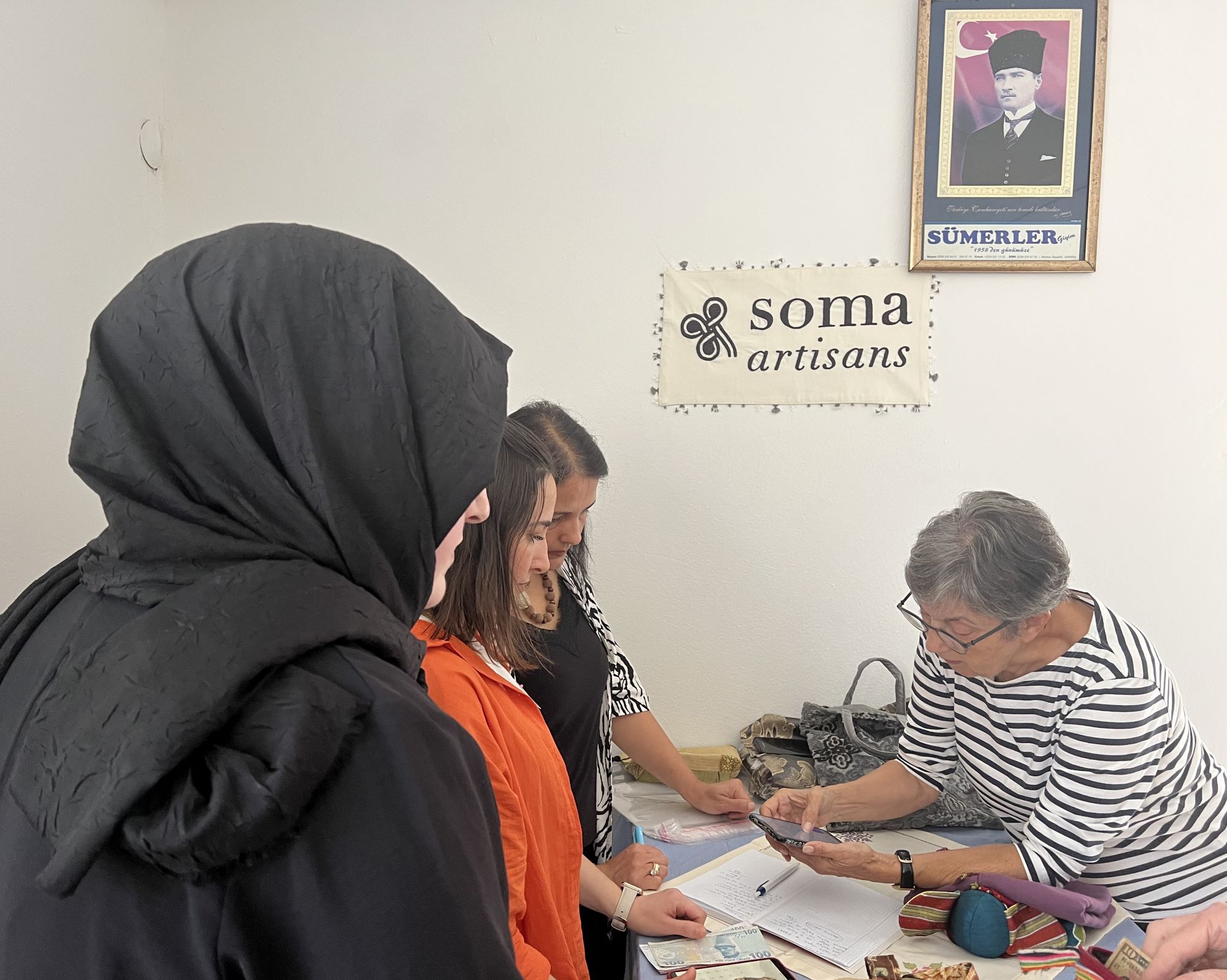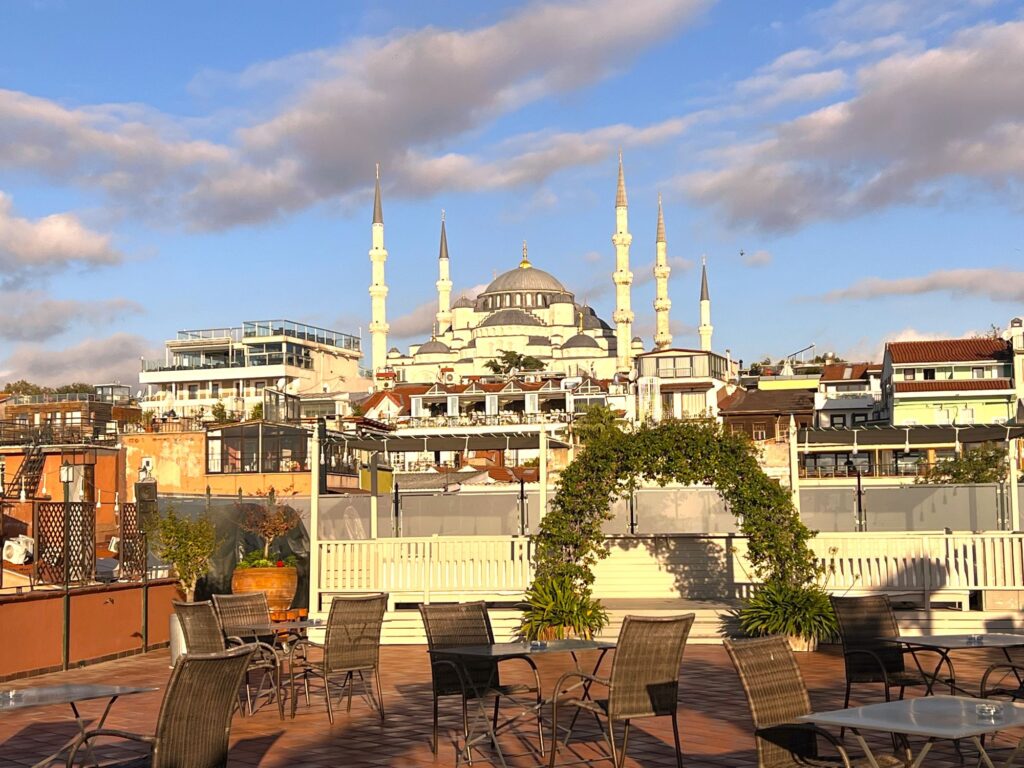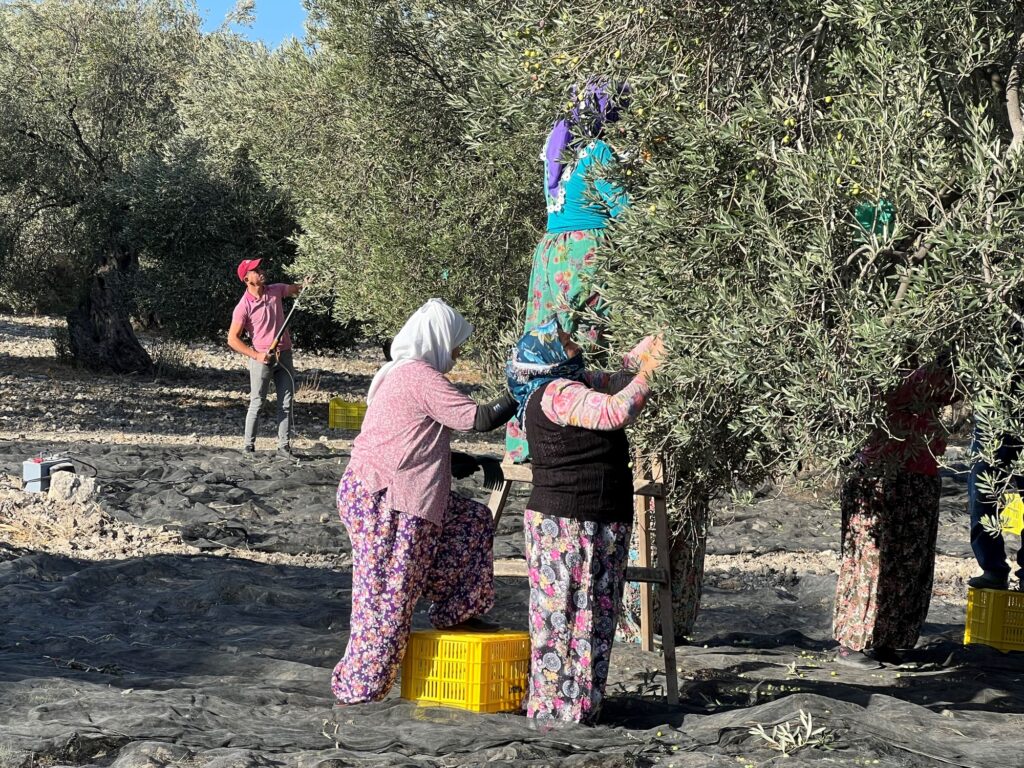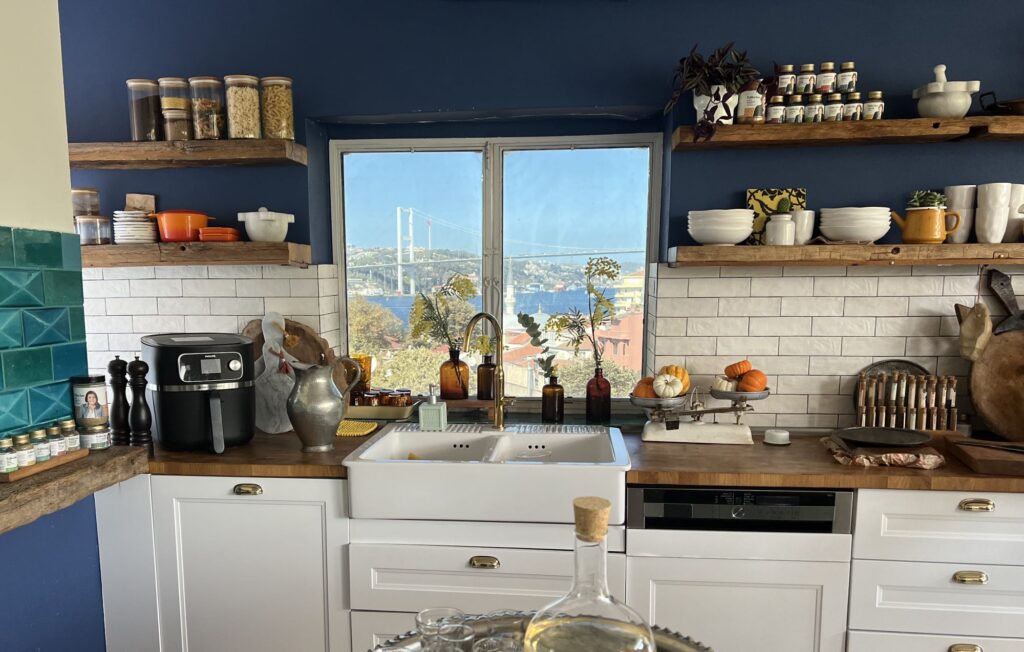Midway through our ten-day culinary journey in Turkey, we took a three-day detour into the history, art and culture of the Northern Aegean, a geographical crossroads where peoples from across the globe have flourished and fought over many centuries. In small towns and on farms, we learned directly from the producers – Anatolian Artisans’ Soma Cooperative, the owners of the sustainable farm Idamera and the chefs and workers at Chef Semsa Denizsel’s olive farm on the coast. And we gained personal insights into families rudely displaced and disrupted from the violence that is an unrelenting component of neighboring nations of the Eastern Mediterranean and Middle East.
Soma
Soma is a small town in western Turkey surrounded by cypress trees and olive farms, not farm from the Aegean Sea and historic ruins in Bergama (ancient Pergamum). In May 2014, Soma experienced Turkey’s worst mining disaster, a blazing underground fire killing 301 miners in one of the lignite mines at the center of the community’s economy. The miners left behind 300 widows and 432 children; the rest of the mines then close, leaving another 2,831 miners unemployed.
Anatolian Artisans, a nonprofit organization based in North Bethesda, Maryland, and funded by The Poverty Allevation Fund and Turkish Philanthropy Fund, sponsored our 10-day culinary and cultural tour in Western Turkey to educate others about the region and bring attention to the low-income Turkish artisans who create handmade products to support their families. “Soma Artisans” is one of those groups. Formed by miners’ wives, Soma Artisans use their talents in traditional crochet and needlelace to make and decorate jewelry, scarves, toys and other accessories, which they sell in their small store in the center of Soma. You might say that spending an afternoon with these women was the “spiritual heart” of our journey.
En route from Istanbul, crossing from its Europe to its Asian shores, we leave the high rises and enter an arid landscape of small mountains, foothills and fertile valley plains. In this broad region that was once Roman, the first seven Ecumenical Councils of Christianity met to work out doctrinal disputes in cities like Iznik, Izmir and Bursa (which also became the first capital of the Ottoman Empire). Before we settle in Ayvalik that evening, we will have passed Bergama, a strategic crossroads as the site of ancient Pergamum, once the powerful presence of ancient Greek and Roman dynasties and where extensive ruins remain, including artifacts from Paleolithic to Byzantine times.
Before the mines changed the region, Soma, was a productive agricultural area like the rest of western Turkey. After the mining fire, in fact the worst global mining disaster of the 21st century, Anatolian Artists stepped in to offer the women of Soma a way to make a living, with sustainable economic benefits for their families, through product development, marketing and training.
We Womantravelers could not have been greeted more warmly by our hosts, who showcased not only their crafts in their store but a hearty lunch highlighted by bulgur and mint couscous, lettuce wraps, pomegranate water and assorted sweets. In our brief time in with them, we shopped with delight, marveling at the intricacies of their embroidery skills – the fringe on scarves, detailed tails on elephant and donkey puppets, colorful necklaces – and contemporary satin patterns that created puppets, bold jewelry, humorous rooster centerpieces and small purses. As a longtime fan of wearable art, I describe this as the craft at its finest.
I bought three animal puppets in satin and embroidery for my three preschool granddaughters and, when back home, helped them set up a doorway puppet theater. The 5-year-old’s spontaneous “thank you” to the women of Soma generated several emails back and forth and that brief introduction to different peoples in the world clearly made an enduring impression on her. While most of us did not speak Turkish, the experience was sufficiently moving that we communicated through heartfelt facial expressions and gestures. Our goodbyes were quite touching, and I doubt any of us will forget those moments in Soma.
Anatolian Artisans continues to sponsors programs and holiday sales to build cultural awareness and generate economic support for these women in Soma, and to empower underserved women in other communities in Turkey.
Idamera
For 10 years, this sustainable farm has been owned and operated by a young couple who began their journey into land use, animal husbandry and agriculture in Vienna. He is Turkish and she is Austrian, and they met there during their studies. Ferit is in charge of the cows (including daily milking of 6 cows at 45 minutes each), and Gudrun maintains the 1,000-square-meter garden. “This is our land and our lifestyle,” they said, “we produce what we consume [even the hay for the cows]. The natural system is an intelligent system, it’s so perfect. At the end of the day in ‘the other system,’ you are still hungry.” The cows roam free; they have no bells, are fed no hormones and their horns aren’t cut. We also gained an insider glimpse of the matriarchal system of cow families (to wit, the Alpha Mother shows the bull which cow is ready to mate and, voila!).
Their farm winds up and around a hill out in the arid countryside. From the top, you can see long distances of rolling blue-tinged hills, olive groves and will uninhabited land. Their child’s playground is the open expanse of nature and the busy garden and barn. Up by the house, the outdoor tables for our farm-to-table lunch were festooned with freshly cut flowers, rose wine and salads straight from the earth. You could say we met the cows who produced the milk that became the cheeses melted on our wood-fired whole grain sourdough vegetarian pizzas that Ferit, Gudrun and their crew served us for lunch.
Ayvalik and the Greek Genocide
As background to this trip, I read a few books on Turkey’s tumultuous history, including Birds Without Wings by Louis de Bernieres. However, hearing first hand from Mehmet Ural of the persecution faced by Greek families like his living in Ayvalik during the early part of the 20th century was breathtaking. At the outbreak of World War I, nearly 27,000 Orthodox Greeks living in Ayvalik and its islands were attacked by armed Turks allied with Germany and many of them driven into the Anatolian interior. Their history is known as the “Greek Genocide.”
For several years, they lives were consumed by massacre, deportation and death marches, boycotts, confiscation and the destruction of their personal, cultural and religious property. Effectively they were stripped of everything and experienced tremendous horrors. While Greece was neutral in World War I, the ethnic Greek population of Turkey was viewed as an internal threat. In 1923, Greece and Turkey signed a population exchange in which the Greek Orthodox population of Anatolia (about 900,000) was exchanged with the Muslim population (about 400,000) who lived in Greece. Families fled, were forcibly sent away or assimilated into each others’ cultures and countries. Over time, the beautiful Greek Orthodox churches in Ayvalik were converted into mosques, abandoned or vandalized. Turks in Greece face similar reprisals.
Ayvalik had been one of the more prosperous Ottoman Greek communities in Asia Minor, with its own college, six grammar schools, 5500 houses, 60,000 acres of olive tree farms and more than 100 industries. Mehmet’s family home is an example of a few remaining houses in the Greek style of architecture – with narrow facades and stairs rising to three or four stories and walled private backyard gardens. On the ground floor, which opens to the street and has a mosaic floor of inlaid glass stones, his family would sell olive oil like the other Greek families in town, as Ayvalik was the center of olive oil production and trade in the Northern Aegean. Mehmet has restored the home to retain its Greek architectural decoration, including colorful tiles and stained glass.
While Istanbul, Ayvalik and the Northern Aegean are in fact a vibrant mixture of many cultures today, political tensions between Greece and Turkey continue to flare. The long history of religious and ethnic hatred in the region is never far off in the rear-view mirror. Just a 1,000 miles away (about the distance between Washington, DC and Kansas City), on the day we were listening to Mehmet’s story, the Israel-Hamas War erupted.




